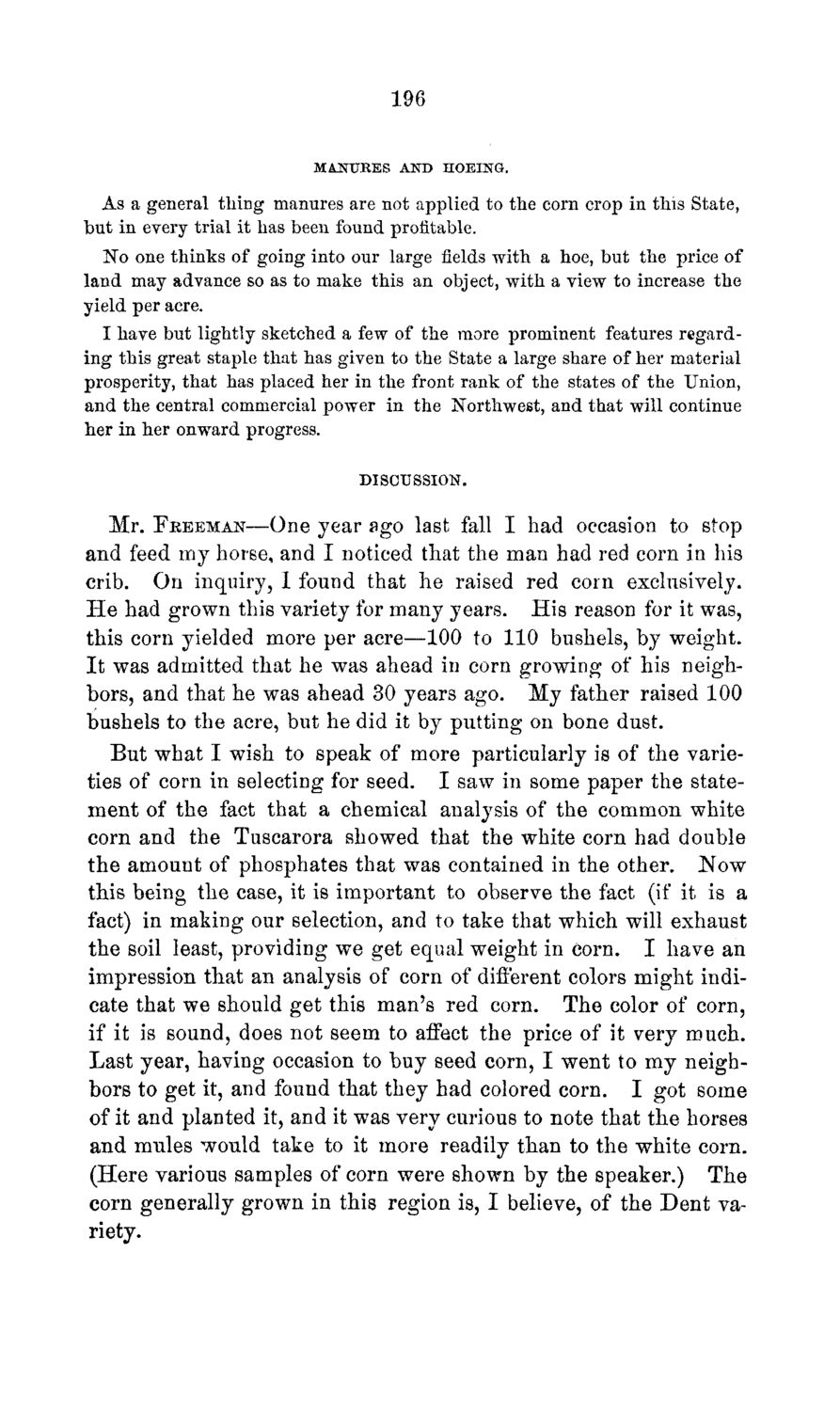| |
| |
Caption: Board of Trustees Minutes - 1869
This is a reduced-resolution page image for fast online browsing.

EXTRACTED TEXT FROM PAGE:
196 MANURES AND HOEING. As a general tiling manures are not applied to the corn crop in this State, but in every trial it has been found profitable. No one thinks of going into our large fields with a hoe, but the price of land may advance so as to make this an object, with a view to increase the yield per acre. I have but lightly sketched a few of the more prominent features regarding this great staple that has given to the State a large share of her material prosperity, that has placed her in the front rank of the states of the Union, and the central commercial power in the Northwest, and that will continue her in her onward progress. DISCUSSION. Mr. FREEMAN—One year ago last fall I had occasion to stop and feed nay horse, and I noticed that the man had red corn in his crib. On inquiry, I found that he raised red corn exclusively. H e had grown this variety for many years. His reason for it was, this corn yielded more per acre—100 to 110 bushels, by weight. It was admitted that he was ahead in corn growing of his neighbors, and that he was ahead 30 years ago. My father raised 100 bushels to the acre, but he did it by putting on bone dust. But what I wish to speak of more particularly is of the varieties of corn in selecting for seed. I saw in some paper the statement of the fact that a chemical analysis of the common white corn and the Tuscarora showed that the white corn had double the amount of phosphates that was contained in the other. Now this being the case, it is important to observe the fact (if it is a fact) in making our selection, and to take that which will exhaust the soil least, providing we get equal weight in corn. I have an impression that an analysis of corn of different colors might indicate that we should get this man's red corn. The color of corn, if it is sound, does not seem to affect the price of it very much. Last year, having occasion to buy seed corn, I went to my neighbors to get it, and found that they had colored corn. I got some of it and planted it, and it was very curious to note that the horses and mules would take to it more readily than to the white corn. (Here various samples of corn were shown by the speaker.) The corn generally grown in this region is, I believe, of the Dent variety.
| |